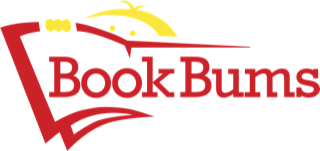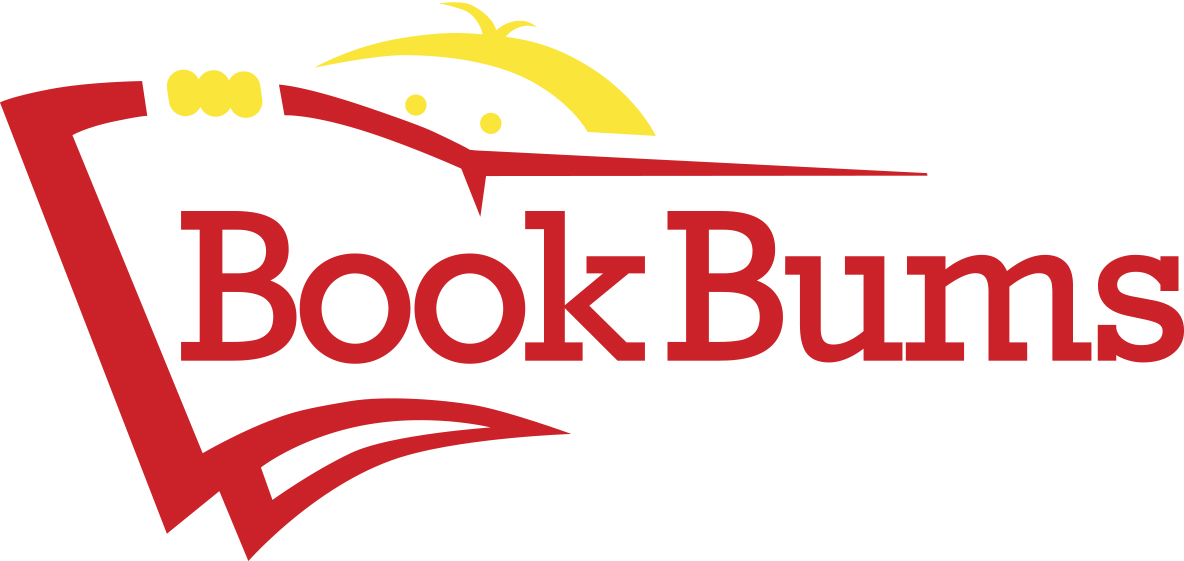
Hello Book Bums families!
This week we begin with a national holiday and make our way through American history, Venn Diagrams, and apostrophes. Curious how we did it? Read on to see how it all works together. Enjoy as well our regular fun features like Literary Calendar and Wordology Workshop.
Word of the Week
epigram (ep-uh-gram) noun/person, place, or thing - a short witty saying
Ben Franklin wrote many epigrams.
“Don’t throw stones at your neighbors, if your own windows are glass.”
- Ben Franklin in Poor Richard’s Almanack, 1736
Literary Calendar
• February 20 is Clean Out Your Bookcase Day.
• How do you organize your shelves? By author? Subject? Color? Let us know, or even send us a photo!

From our Bookshelves

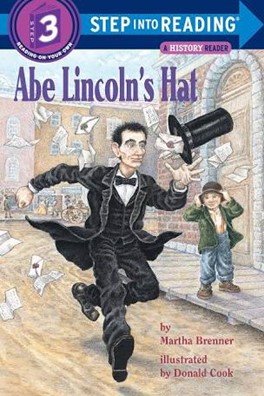
In celebration of Presidents’ Day, we’ve chosen a few books that just might help your kids to discover a love for nonfiction reading. Don’t worry. These books don’t go into political agendas. They share instead the personalities of some famous presidents who had interests with which your kids just might connect. They might even help your children to realize that the faces of the presidents they see on television are real people. Even the most revered presidents share interests and even weaknesses to which we can all relate.
Did you know that Thomas Jefferson loved food and was credited with bringing French fries and ice cream to the US? George Washington was a devoted dog lover, and he once had a dog named Sweet Lips. Abraham Lincoln was a bit forgetful and came up with creative ways to remain mindful of important tasks that needed his attention. These men were not just American heroes. They were real people who did “real people things.”
You should know that, until 1970, Washington’s birthday was celebrated on February 22nd but, so federal employees could enjoy a three-day weekend, we began celebrating multiple presidents on the same day—the third Monday in February. That’s how what was once President’s Day (one president) became Presidents’ Day (all presidents).
Did you notice the change in placement of that apostrophe? The holiday name changed because the holiday changed. Though the two words sound identical, the meaning was changed with that one high-flying comma that we call an apostrophe.

Tips for Readers and Writers
If you decide to read the three books we shared, above, grab a sharpie and some blank index cards to extend the learning experience with your kids. As you read each story, jot lots of facts, one on each index card, as shown in the images below.
When you’ve read two books, make two big loops with yarn or draw two big circles on wrapping paper or use a couple of hula hoops to create a large Venn Diagram. Mix up the fact cards you made while reading the two books and see if your kids can determine which fact goes where on the diagram.
Lots of parents ask how they can help their kids perform well on nationally normed assessments. Non-risk/No-stakes tasks like this one represent the kind of “quizzing” that requires students to “pull back to mind” information from their memories –and that work is really good for them.
If your kids cannot recall where a fact card goes, encourage them to flip back through the books with you to figure it out. Teaching kids how to retrieve information, from memory and text, is extraordinarily important. This work does require stamina which will improve with practice.
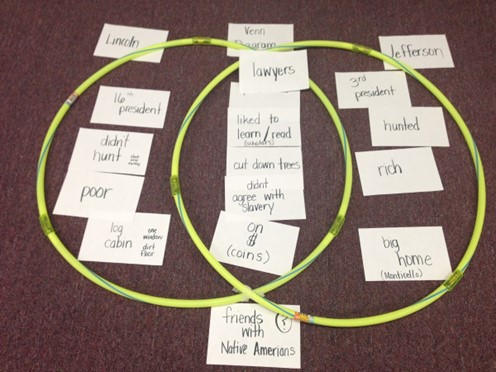
After completing this task, try doing the task again, but this time compare a president with us.
How are we alike? How are we different?
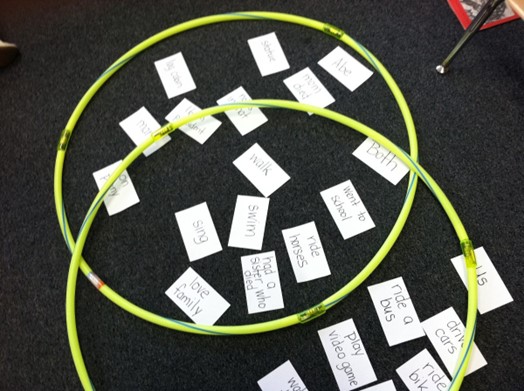
For an additional challenge, you could even do a Venn Diagram with three circles on a piece of paper. You and your kids could write facts within the appropriate overlapping circles according to what you learned from each of the three books.

Tips for Families
All this talk about presidents could be a perfect segue into a discussion about coins. Notice that Lincoln is on the penny, Jefferson is on the nickel, Roosevelt is on the dime, and Washington is on the quarter. Distinguishing one coin from another and recalling the value of each coin can be tricky for kids. Noticing the presidents’ faces might help kids distinguish one coin from another.
Wordology Workshop
• The Greek root gram means writing.
• You can find it in words like grammar and telegram.
• It is also in our word of the week, epigram.
“A true Friend is the best Possession.”
-Ben Franklin in Poor Richard’s Almanack, 1744
Practical Grammar
In the kids’ books we shared above, each title has a possessive noun. Singular possessive nouns use an apostrophe (‘) to indicate possession. We see Jefferson’s Feast, the General’s Dog, and Lincoln’s Hat.
When teaching kids about possessives, it can be helpful to draw an arrow from the thing that is possessed to the thing that possesses it.
In the following example,
The dog belongs to the boy.
we can see that
It is the boy’s dog.
To help kids understand the reason behind that apostrophe, draw an arrow from dog to boy and say, “The dog belongs to the boy.”
If you know someone who would benefit from our newsletter or tutoring at Book Bums, please share this email with them! Thank you.
Copyright © 2024 Book Bums, All rights reserved
Our mailing address is:
7967 Cincinnati-Dayton Road Suite L
West Chester, OH 45069
